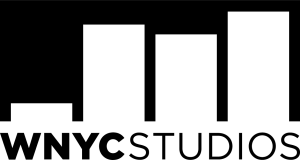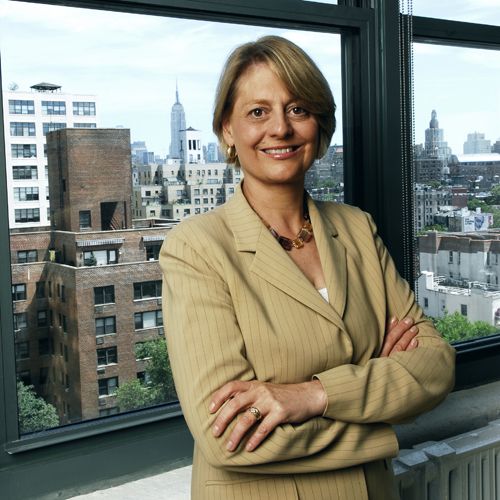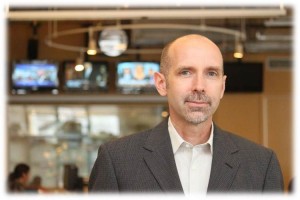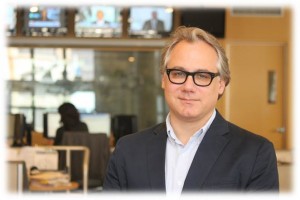In a recent post we talked about the conundrum that many broadcasters face about embracing podcasting. But not everyone is reluctant, and some of the podcasting activity in the broadcasting sector has been nothing short of spectacular….and smart. Public radio has been well out in front of this one. The system has been actively involved in the podcast space, and continues to make significant commitments to ensuring it continues to lead the way.
In October of last year New York Public Radio’s WNYC, an early innovator in the podcasting space, announced plans to create WNYC Studios. They describe it as “a major new multimillion investment to incubate talent and double down on podcasts.” WNYC already has plans in place to launch The New Yorker Radio Hour and pilots in development with VICE News and Daily Show correspondent Jessica Williams (teamed with comedian Phoebe Robinson).
 It’s worth noting that New York Public Radio remains a very committed local broadcasting entity, in pursuit of the most robust on-demand audio strategy. At about the same time that WNYC Studios was launched, WNYC Distribution came into being. It means that WNYC now distributes Radiolab and On The Media, rather than running affiliation through a public radio network. Tom Hjelm, WNYC’s EVP and Chief Digital Officer, calls it “part of what makes a modern media company.”
It’s worth noting that New York Public Radio remains a very committed local broadcasting entity, in pursuit of the most robust on-demand audio strategy. At about the same time that WNYC Studios was launched, WNYC Distribution came into being. It means that WNYC now distributes Radiolab and On The Media, rather than running affiliation through a public radio network. Tom Hjelm, WNYC’s EVP and Chief Digital Officer, calls it “part of what makes a modern media company.”
The other major player is New York Public Radio’s President and CEO, Laura Walker, who has led her organization’s meteoric growth during this mind-boggling time for media brands. It takes a visionary and innovator to see the landscape and organize and implement dramatic plans. And that’s what Walker has done since taking over WNYC’s operations two decades ago.
With podcasting playing a larger role on the audio landscape every day, we asked WNYC’s Dean Cappello, EVP and Chief Content Officer, to share the thought process behind the launch of WNYC Studios. And along the way, Dean offered up a vision of the future for on-demand audio that anyone in or out of radio will appreciate.
His observations are so important and insightful that we’re turning this week’s installment of Radio’s Most Innovative into a two-parter. If there’s a smarter, more insightful view of podcasting and the on-demand space out there, we haven’t come across it.
JM: What led you to decide to “double down” on podcasting?
DC: We want to build great and distinct audio, and we want to get it into the ears of passionate listeners. That’s the job. We saw two things happening that drove us to double down.
First, the audience was fracturing. The public radio audience became increasingly driven by our core audience while secondary and tertiary listeners were becoming more distracted by new media options.
We also saw a clear pathway to new listeners that was more about on-demand platforms than broadcast. Additionally, projects like “Radiolab” and “Freakonomics Radio” showed us they could become significant businesses and drivers of engagement.
So WNYC Studios is really a formalization of a strategy we’ve been building towards for years: to build strong audio properties based on personalities for audiences that prefer on-demand listening.
JM: How does podcasting fit into WNYC’s overall strategy?

Photo credit: Scott Ellison Smith
DC: WNYC makes great content that people engage with. Platforms don’t matter as much as the quality of the relationship between the audio and the listener. We’ve been producing podcasts since the very beginning of the medium and have produced successful programs for several years. The commitment to on-demand is really our commitment to moving with the audience.
If we were producing video, we’d be crazy to stick with a purely broadcast strategy. The audience is on the move. Those new ears need to be informed and entertained. We intend to lead the pack. So podcasting – and the development of the WNYC Studios – is key to our work overall. Podcasting is also a developing revenue market and that’s important as ad dollars move to new spaces and platforms.
JM: What is the impact on a listener of going the time-shifting route and listening to a podcast? Does it augment or cut into traditional radio listening?
DC: I don’t think there’s a simple answer. Clearly, people have only 24 hours in a day. But we’ve also seen that extremely busy people binge-watch House of Cards or load up on Serial. Stellar content creates audiences and then a sense of event when the audiences are significant.
On top of all that, you can consume audio while you do other things, so we are creeping into more corners of peoples’ lives – like the kitchen while cooking, etc. And we are clearly being consumed wherever people are trapped with their devices – underground or walking. New York is a very particular place but I think what we produce and the lifestyle of a major city work really well together.
We do also have to reinvigorate the promise of radio for traditional and new listeners. On-demand audio is about that personal, one-on-one experience. Radio is great for the live, unfolding event – whether serious (the Paris attacks), urgent (an approaching blizzard), or fun (Mets in the World Series).
The question in front of us right now is how long-term habits are going to shape media consumption. The tyranny of choice is going to hand us the opportunity to be the curators for smart people who enjoy audio across multiple platforms.
JM: Why create a separate operation dedicated to podcast development?

DC: Radio listening and on-demand listening are different vehicles. We have to produce for the particular needs of those audiences. The radio format, the linear nature of broadcast, the overall daily lineups, and the audience’s desire for a familiar experience create requirements for new programming that argue against radical disruption or innovation. The audience has particular appetites based on the habit of radio listening and that brings a lot of expectations.
Podcasting, on the other hand, allows us to aggregate communities of listeners across the globe based on nothing more than passion or interest. But you have to build for that environment, those expectations. The podcast audience is about a decade younger than the radio audiences we serve. They have different interests, tolerances, tastes, etc.
There are also key differences in production. With radio, you have to stretch a program into a 58 minute broadcast window, for example. A podcast can end when the material can’t hold the space any longer, when it makes organic sense. It has the freedom to last for 15 powerful minutes or can expand to 1:18 (see Marc Maron) if it makes sense.
There’s also the question of talent. There are a lot of people making things who want the structure and relative freedom of a podcast project. We’ve found that the more scale we build in on-demand, the more we attract people and projects. WNYC has operated for the last 20 years as a robust creative community. We’re now extending that ethos into the world of podcasting and on-demand.
JM: What internal hurdles did you have to get past to make WNYC Studios a reality?
DC: You have to be prepared to increase the volume of the pipeline, of having many more projects in production or piloting at the same time, and you have to be ready to manage the creative chaos that goes with it. Institutions love formal plans with metrics and budgets that work as envisioned. But the creative process is pretty messy and needs time to develop. So I think part of my job is to encourage the spark to become a conflagration while assuring my colleagues that I don’t think of this as a big exercise in blackjack.
Our Board of Trustees, which includes great thinkers from the media and tech worlds, was also very thoughtful and deliberate about how to support the activity and what questions to ask.
Then I think there are internal issues around who gets to play in what space. Everyone in radio will tell you that every employee has a project to pitch and that many people think their own series will bring a creative freedom they otherwise won’t get. So you have to manage expectations, give people a way to pitch so there is shared opportunity, and then be transparent about how decisions get made. Not everyone will be happy but at least people will understand your decisions.
JM: Explain what “incubating talent” means and what it entails?

Photo credit: WNYC
DC: I think the biggest part of my job is spotting new talent and helping people who are established climb the next mountain. Incubating is really about maintaining relationships that support people to realize their creative goals. I think there is also a healthy dose of understanding what someone is capable of or great at that may be bigger or different than what they feel about themselves – and giving them an opportunity to see themselves in a new way.
I am conscious that the first relationships we have with people – the reasons we started working together – are rarely the things that hit. It is usually sticking with someone you think has talent and drive until they find the right thing, and it really takes off.
JM: How do you scout for and select the partners you choose to develop shows with?
DC: We get a lot of proposals coming our way and are thrilled by the caliber of talent we are having conversations with. We also go seek out the partners we think fit within the portfolio. We’ve seen that as we build interesting and successful projects, more and bigger potential partners show up and it gets easier to get someone’s attention.
We’ve had success with big brands that are natural fits (The New Yorker) and we will continue to push into new places. I’m intrigued by what Bill Simmons and HBO are doing together because I think it signals a new understanding that personalities and content really thrive across media and platforms, and that exclusivity as we’ve understood it might be an impediment to developing a brand. It’s all about how to move across platforms to create significant engagement with a growing audience.
We’ve learned a lot from partnerships. And they’ve evolved over time. At first, we wanted to get the funding necessary to launch something. As purely financial relationships made less sense, we started to look at what a whole healthy partnership looks like. We want to bring our best editorial and production selves to a relationship. We want a good cultural fit.
We’re New Yorkers. We like big ideas and sometimes risky ideas and not everyone is comfortable with that. And we want to make sure we maintain strong relationships with talent whatever the structure. And I should say that we construe partnerships broadly. They can be with institutions or with individuals like Alec Baldwin.
As we’ve grown and scaled up, we’ve attracted different partnerships. Some of this is also about positioning WNYC in new and interesting ways as we develop. We’re the house that includes The New Yorker Radio Hour as well as a terrific and sharp new project with Jessica Williams (The Daily Show) and Phoebe Robinson. There’s a very broad range.

JM: Is the podcasting initiative driven by existing staff? Or are you bringing in new talent?
DC: It’s a mix. A lot of great people on staff have raised their hands to pitch new projects — and we have a process for that — or to work on new things in the pipeline. We’re also launching brands within brands (Radiolab is in development of its first-ever spin-off) and that’s an opportunity to move people around and give them a chance to work on different type of shows and projects. And then we are also looking to grow and diversify the staff by attracting and adding new people.
I reorganized my team several months ago and moved a lot of talented people into new positions to prepare for growth and change. We want to have a range of skills within the shop, so we’re always looking at how to enhance what we have.
As it relates to new projects, we’ve created ways for the staff to pitch internally (that’s how we found Death, Sex & Money) but we’ve also reached out and invited people to pitch us. Over the past eight months, we’ve held a pitch process as part of our first-ever women’s podcast festival, and held a Podcast Accelerator at the Online News Association Conference, which received 400 entries. We are now piloting the two winning projects.
JM: Are there different job skills and backgrounds you look for in people on the podcast side versus the traditional radio side?
DC: I think we are looking for similar skills across all production, but on podcasts especially we look for people with an entrepreneurial drive. The units are relatively lean and the vision of the projects is usually pretty personal. So you want producers who can stand on their own two feet, operate pretty independently, and continue to push when the fog gets really thick. Our success – from Radiolab and Freakonomics Radio to Death, Sex & Money and Note to Self – is usually driven by someone who is so dogged they are going to realize their idea with or without you. In many ways, that’s the secret sauce.
We have also invested over the last decade in sound design as a driving force. Not necessarily with a lot of whiz-bang production but with a deliberate, careful sense of leading a listener through the work. We have people with great ears and great senses of composition and that has been hugely advantageous for us. It’s one of the great distinguishers of audio work from WNYC Studios.
Next Friday, in part two of our Radio’s Most Innovative profile of WNYC Studios, Dean will talk about the differences between creating content for podcasting versus broadcasting, as well as fundraising, sponsorship, and what aspiring podcasters can do to succeed in this space.
Special thanks to the WNYC team, as well as Mike Stern, for putting this post together.
INNOVATION QUOTE OF THE WEEK
“A rock pile ceases to be a rock pile the moment a single man contemplates it, bearing within him the image of a cathedral.”
Antoine de Saint-Exupery, French writer, poet, journalist, & aviator
More of Radio’s Most Innovative
- Radio’s Most Innovative: Dr. Demento
- Radio’s Most Innovative: All Christmas Music
- Radio’s Most Innovative: NPR’s “Car Talk”/Doug Berman
- Radio’s Most Innovative: NextRadio
- Radio’s Most Innovative: Fun Kids
- What To Do If Your Radio Station Goes Through A Midlife Crisis - April 25, 2025
- A 2020 Lesson?It Could All Be Gone In A Flash - April 24, 2025
- How AI Can Give Radio Personalities More…PERSONALITY - April 23, 2025





Leave a Reply